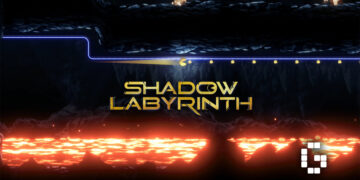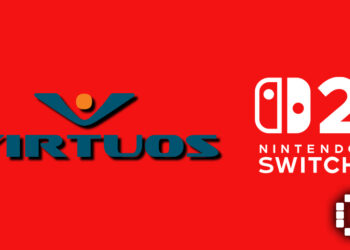For the second and last day of LEVEL UP SPACEBAR, Michael Mumbauer, Senior Director of Visual Arts Service Group, Worldwide Studios, Sony Interactive Entertainment, came on to give a panel in The Next Frontier of Game Experience. This is a follow up to his keynote from LEVEL UP KL 2018, on going Beyond Interactive Entertainment, which you can watch for more context below.
When you think back of games from back in the day, you might think of coin arcade machines, before home consoles were really popularized. You’d occupy one booth, while your friend might be at another, with tokens stacked up at the ready whenever time ran out. When the first home consoles started getting released, most of the games could still be considered primarily single-player, with Pong probably one of, if not the, earliest examples of an actually multiplayer game.

Mumbauer points out how games started out as solo experiences, nor did you go to the arcades for “story” games. Dragon’s Lair changed that: even if stories like that started out really simplistic by today’s standards, they were, nonetheless, a different experience.
People may have watched over your shoulder at the arcade, the beginnings of the viewer experience. Mumbauer says that experiences like these are simply “bigger”, “magnified”, with players now able to compete on bigger stages, filling stadiums at events. Everyone is now connected, watching others play online.
When taking into consideration his panel today and his keynote from 2018, it could be summed up as such:
“Technology can now ‘unlock’ the imagination of game developers, removing limits… it might some day reach a level that is virtually indistinguishable from reality.”
“Virtual production” as a field can bring forth many opportunities – jobs notwithstanding – when it comes to creating cinematic games. This line between film- and video game-making is getting increasingly blurry. You don’t need to look very far for a comparison: if you’ve read our The Last of Us Part 2 impression and review, we’ve tried to stress how “real” everything looks. It wouldn’t look out of place on the silver screen.

Games are in a unique position in being an interactive medium. When comparing it to other entertainment like television or movies, Mumbauer boils it down to the difference being the agency you have in games. You are playing the character. You are taking action. For books, movies, you merely sit back, and watch someone else act out the script. Choose Your Own Adventure books mimic the ability to make choices, but they don’t come with animated visuals, music, voice work, the whole thing.
Technology marches on as we go from pixels to 3D art. Mumbauer acknowledges it isn’t like good stories can’t be created without 3D art, but that other art styles may be seen as “too simple”.
“It’s the connection with the digital character, the believability in that they are alive, which the technology helps with. The devil is in the details.”
Whatever it is, visual fidelity is gradually built on, and he doesn’t believe there will be any single tool that will push it to the next frontier. Be it mocap to facial scanning and so forth, all these will be the pieces that build up for the future of visual effects. There will be opportunities in character modelling, and related animations, so he advises interested parties to find a “segment” you are most passionate about. Basically, find your specialization, and find whoever you need, and you’ll have a team!
One could make the argument about the more fantastic aspects of games – basically, you know, the fantasy stuff – but Mumbauer argues that so long you have the ground work and concepts done, even “not-real” things like dragons aren’t going to be issues to create. Draw from the realistic and let your imagination do the rest. He gives Benedict Cumberbatch’s performance as Smaug as an example.
High level of visual fidelity may have a certain tendency to be relegated to single player experiences, but there’s no reason why the future can’t see it reach to new heights in multiplayer game settings. It could also just go back to being simple, because trends can be circular like that.
The editor personally would prefer more “outlandish” art styles, rather than a focus on making games look “realer than real”. It’s not like a bright, colourful world can’t hide some horrifying stuff if you really wanted to have a deeper message underneath. You’d just need to watch out for it, and that sounds more fun as the gears turn in your head, thinking it over.
Still though, the impact will certainly be there with the controller in your hands. We’ll see what the future of gaming will look like – graphically! – and watch as the hardware do their best to catch up with the boundless imagination of those who work on their projects.









![[GUIDE] Persona 5: The Phantom X Codes & How To Redeem Them](https://cdn.gamerbraves.com/2025/07/P5X-Codes_Guide_FI-360x180.jpg)



![[ASIA EXCLUSIVE] Bringing Back a Classic: Inside the Making of FINAL FANTASY TACTICS – The Ivalice Chronicles](https://cdn.gamerbraves.com/2025/06/FFT-Ivalice-Chronicles_Interview_FI2-360x180.jpg)


![[EXCLUSIVE] Gearbox Executives Share Details on Borderlands 4 – Story, Weapons, and Lessons Learned](https://cdn.gamerbraves.com/2025/06/Borderlands-4_Interview_FI-360x180.jpg)
![[EXCLUSIVE] Wan Hazmer Reveals How No Straight Roads 2 Expands Beyond Vinyl City with Shueisha Games](https://cdn.gamerbraves.com/2025/06/NSR2_Interview_FI-360x180.jpg)










